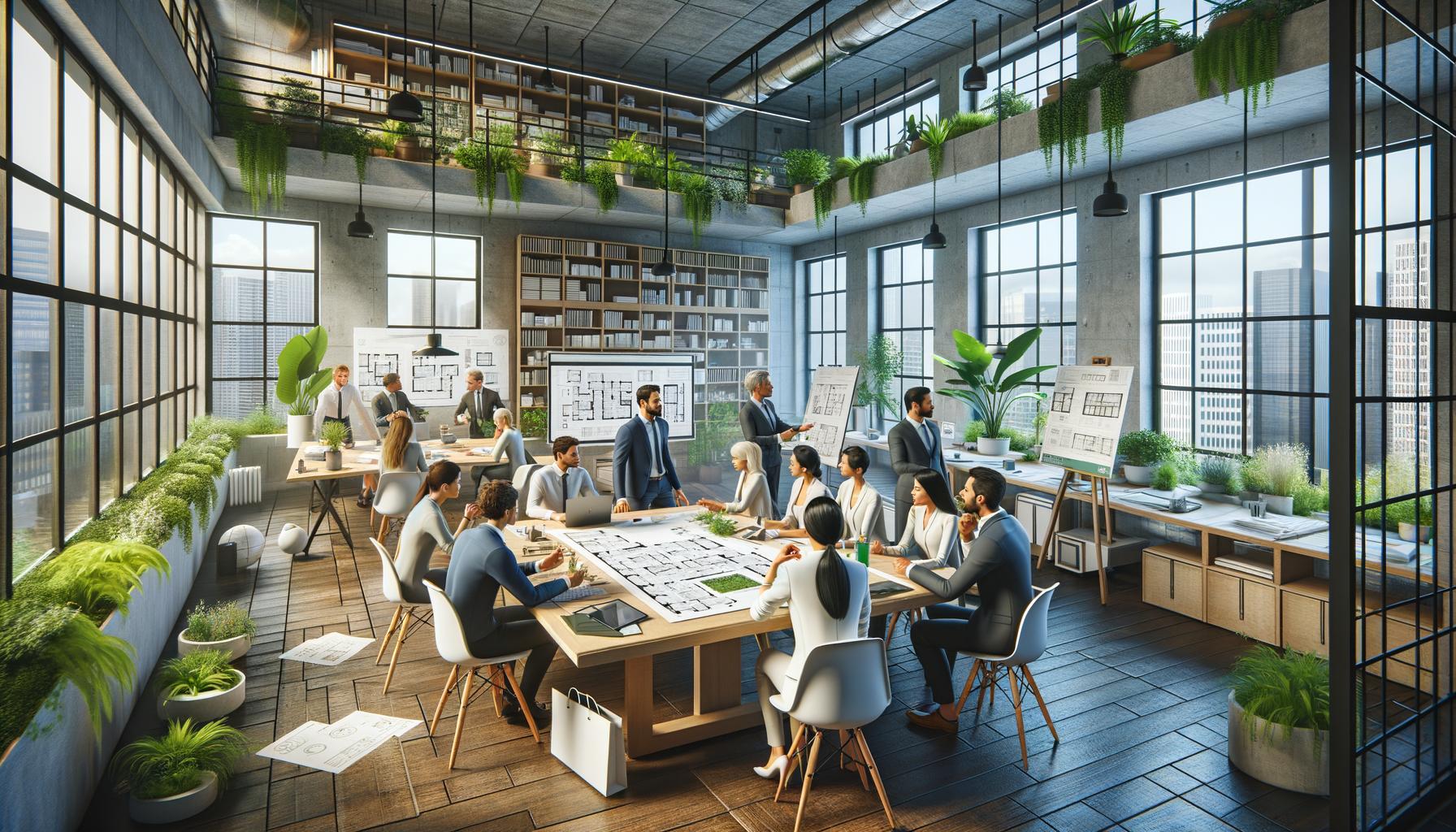
At Home Owners Association, we recognize the growing importance of sustainable building practices in modern construction. Our sustainable building design manual outlines key practices that can significantly reduce environmental impact while enhancing comfort and efficiency.
This comprehensive guide covers essential aspects of sustainable design, from energy efficiency and water conservation to eco-friendly materials and construction techniques. By implementing these strategies, homeowners can create buildings that are not only environmentally responsible but also cost-effective in the long run.
How to Maximize Energy Efficiency in Buildings
At Home Owners Association, we understand that energy efficiency forms the foundation of sustainable building design. Smart strategies can significantly reduce energy consumption and costs while minimizing environmental impact.
The Power of Passive Solar Design
Passive solar design revolutionizes energy-efficient construction. This approach collects heat as the sun shines through south-facing windows and retains it in materials that store heat, known as thermal mass. Building orientation to maximize southern exposure in the Northern Hemisphere (or northern exposure in the Southern Hemisphere) allows for optimal solar gain during winter months. The incorporation of thermal mass materials like concrete floors or brick walls absorbs heat during the day and releases it at night, maintaining comfortable temperatures naturally.
Insulation and Windows: Building Envelope Champions
High-performance insulation and windows are critical for maintaining energy efficiency. The U.S. Department of Energy reports that proper insulation can cut heating and cooling costs by up to 15%. We recommend materials with high R-values, such as spray foam or cellulose, to create an effective thermal barrier. For windows, double or triple-pane options with low-emissivity coatings significantly reduce heat transfer, keeping interiors cooler in summer and warmer in winter.
HVAC Systems: A Revolution in Efficiency
Energy-efficient HVAC systems are essential for sustainable building design. Heat pumps can be up to 300% more efficient than traditional heating systems. Geothermal heat pumps, which use the earth’s constant temperature for heating and cooling, can reduce energy consumption by up to 70% compared to conventional HVAC systems. Regular maintenance and proper sizing of these systems ensure optimal performance and longevity.
Smart Building Technologies: The Future of Energy Management
Smart building technologies transform energy management in homes and commercial buildings. Advanced building management systems automatically adjust lighting, heating, and cooling based on occupancy and external conditions. The integration of these technologies with renewable energy sources like solar panels can further enhance a building’s energy profile, potentially achieving net-zero energy status.
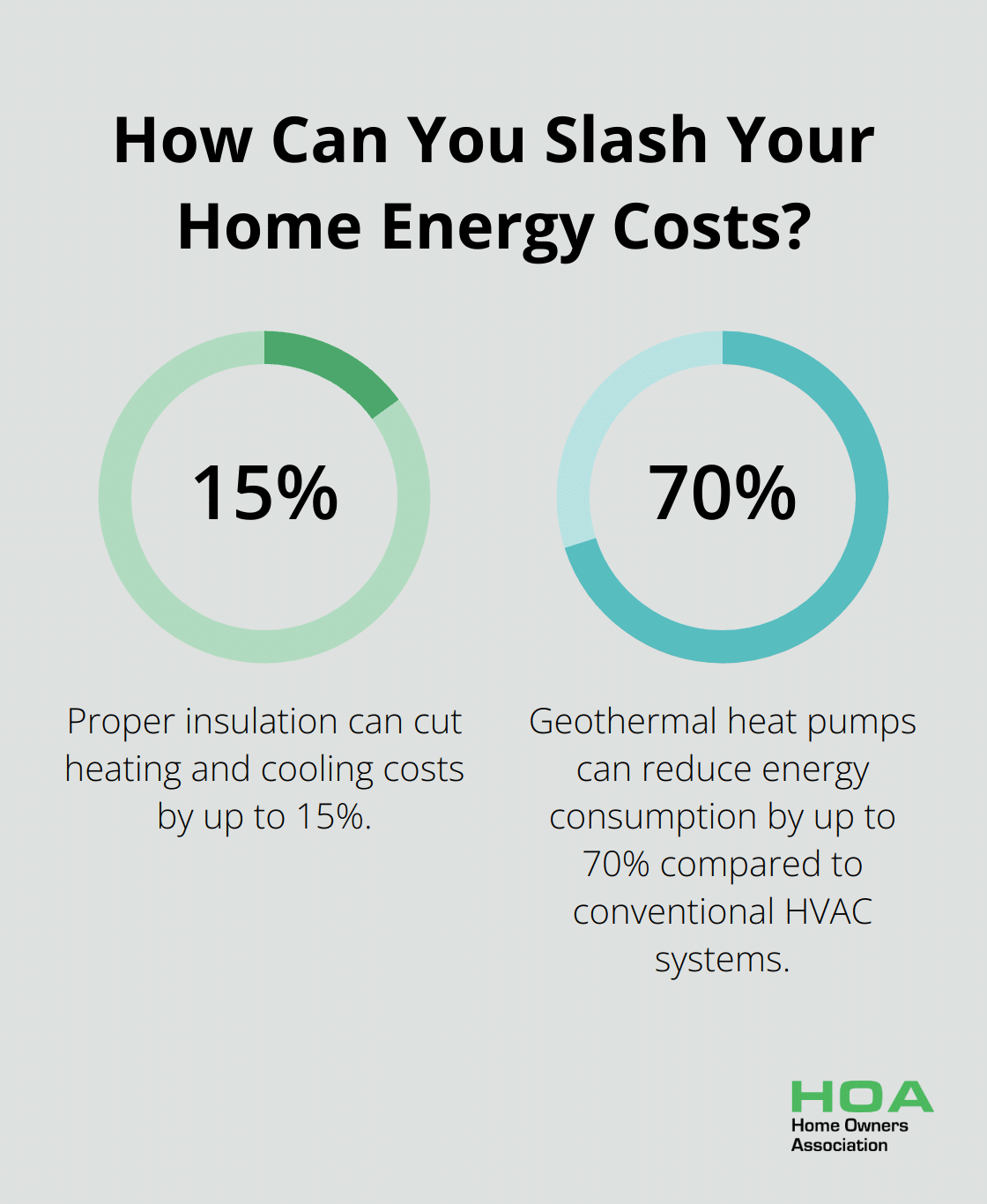
As we move forward in our exploration of sustainable building practices, it’s important to consider how energy efficiency interacts with another critical aspect of green design: water conservation and management. The next section will explore innovative strategies to reduce water consumption and promote responsible water use in sustainable buildings.
How We Conserve Water in Sustainable Buildings
At Home Owners Association, we recognize water conservation as a critical component of sustainable building design. As Australia faces increasing water scarcity challenges, we must implement effective water management strategies in our homes and buildings.
Efficient Fixtures: Small Changes, Big Impact
One of the most straightforward ways to reduce water consumption is to install low-flow fixtures and appliances. The Australian Water Efficiency Labelling and Standards (WELS) scheme provides a rating system that helps consumers choose water-efficient products. Fixtures with high WELS ratings can significantly decrease water usage. The star rating at the top of the WELS label shows the water efficiency of the product, with more stars indicating higher water efficiency.
Harnessing Nature: Rainwater Harvesting
Rainwater harvesting systems reduce reliance on mains water supply. In Australia, where many areas experience periods of drought, collecting rainwater provides a valuable alternative water source. This harvested water can be used for irrigation, toilet flushing, and even laundry (significantly reducing mains water consumption).
Recycling Greywater: Giving Water a Second Life
Greywater recycling systems offer another innovative approach to water conservation. These systems collect water from sinks, showers, and washing machines, treat it, and repurpose it for non-potable uses like toilet flushing and garden irrigation. However, it’s important to ensure that these systems comply with local regulations and are properly maintained to prevent health risks.
Smart Landscaping: Beauty with Less Water
Drought-resistant landscaping (also known as xeriscaping) effectively reduces outdoor water use. Selecting native Australian plants that are adapted to local climate conditions creates beautiful, low-maintenance gardens that require minimal watering. Xeriscape gardens reduce water consumption, leading to lower utility bills. This financial benefit can make your property more attractive to potential buyers. Incorporating mulch and efficient irrigation systems like drip irrigation can further enhance water conservation in outdoor spaces.
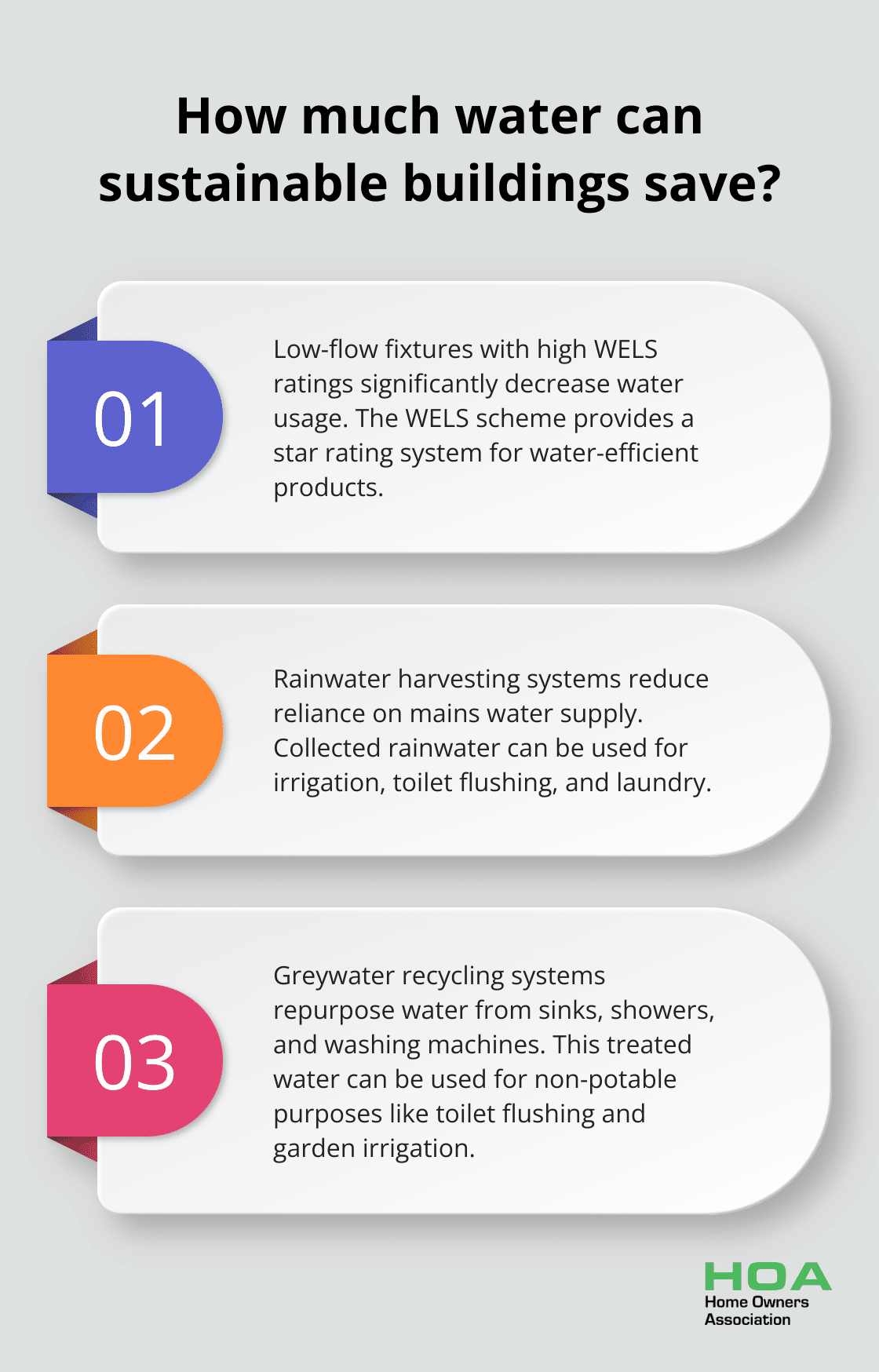
These water conservation strategies not only contribute to environmental sustainability but also lead to significant cost savings for homeowners. As we continue to face water scarcity challenges, adopting these practices in our buildings becomes a necessity for a sustainable future. The next section will explore how sustainable building practices complement these water-saving measures to create truly eco-friendly buildings.
How to Choose Sustainable Building Materials
At Home Owners Association, we understand the importance of selecting the right materials for sustainable construction. The choice of building materials significantly impacts a project’s environmental footprint, durability, and overall performance.
Eco-Friendly Options for Construction
Eco-friendly building materials support sustainable building practices. Bamboo serves as a rapidly renewable resource that replaces traditional timber in many applications. It grows quickly and reaches maturity in just a few years (compared to decades for most softwoods and hardwoods). Hempcrete, a biocomposite made from hemp hurds and lime, offers another excellent option. This material absorbs CO2 during its growth, contributing to its environmental benefits.
Recycled and Local Materials
The use of recycled and locally-sourced materials in construction projects reduces carbon emissions associated with transportation. Using recycled steel can reduce energy consumption compared to virgin steel production. Local stone and reclaimed timber minimize transportation costs and add unique character to buildings.
Waste Reduction Strategies
The Australian construction industry generates a significant amount of waste annually, according to national reports. Prefabrication techniques reduce on-site waste considerably. The use of Building Information Modeling (BIM) software optimizes material use and reduces waste through precise planning and ordering.
Life Cycle Assessment of Materials
Life Cycle Assessment (LCA) evaluates the environmental impact of building materials from extraction to disposal. When selecting materials, consider their embodied energy, potential for reuse or recycling, and longevity. Aluminum, for example, is recyclable and can contribute to energy efficiency in buildings through its use in windows and solar reflectors.
Innovative Sustainable Materials
New sustainable materials continue to emerge in the construction industry. Mycelium (fungal roots) serves as a natural, biodegradable alternative to traditional insulation. Cross-laminated timber (CLT) provides a strong, lightweight alternative to concrete and steel in multi-story buildings. These innovative materials offer exciting possibilities for reducing the environmental impact of construction while maintaining or improving building performance.
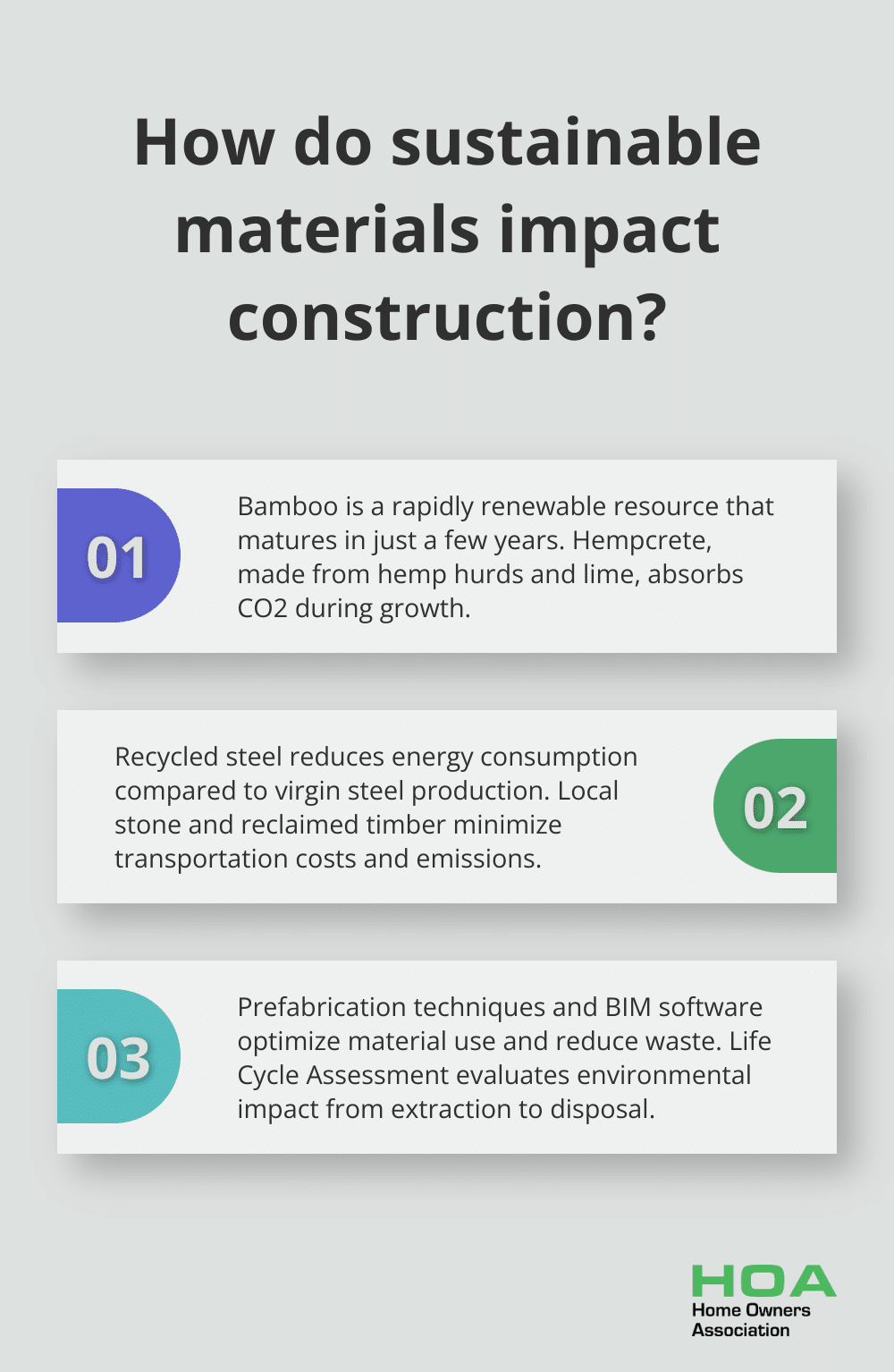
Final Thoughts
Our sustainable building design manual outlines key practices for environmentally responsible construction. These strategies reduce utility costs, improve indoor air quality, and increase property value while minimizing environmental impact. The integration of sustainability from the initial design phase maximizes benefits and reduces the need for costly future retrofits.
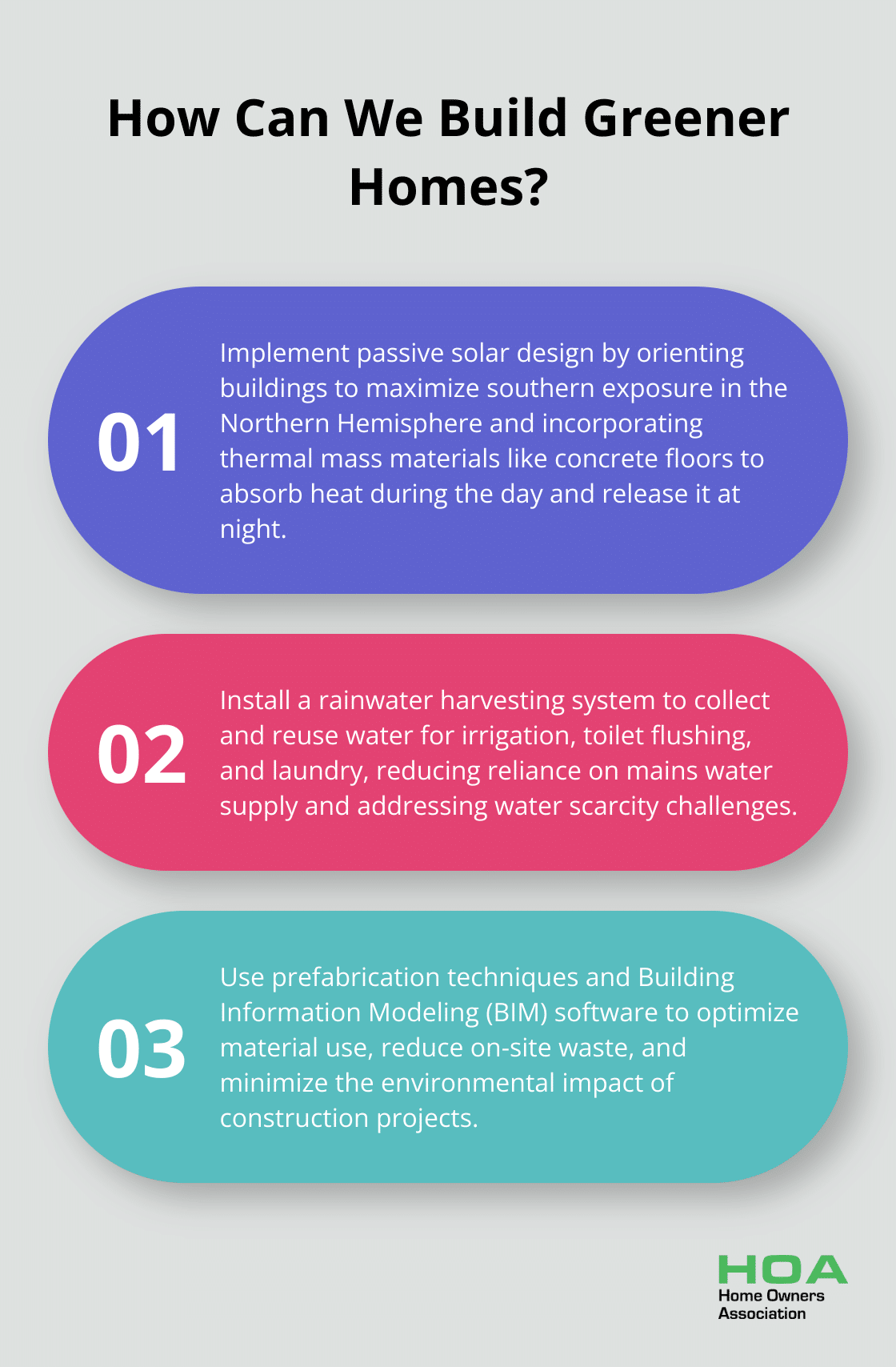
Water conservation strategies address growing concerns of scarcity, particularly in drought-prone areas of Australia. The choice of sustainable materials amplifies the positive impact of green building practices. These approaches support local economies and reduce the carbon footprint associated with construction.
Home Owners Association provides expert guidance and resources to implement sustainable building design practices effectively. We offer trade pricing and discounts on sustainable materials (making it easier for homeowners to make environmentally responsible choices). Our sustainable building design manual empowers Melbourne homeowners to create efficient, comfortable homes that contribute positively to our environment and communities.





